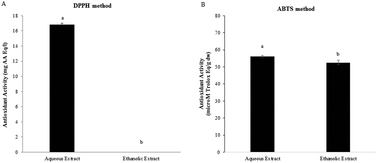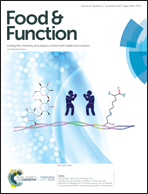Bioprospection of Isochrysis galbana and its potential as a nutraceutical
Abstract
Microalgae have strong potential as novel sources of nutraceuticals, as they contain significant amounts of highly valuable bioactive compounds. This study focuses on the bioprospection of biomass of the microalga Isochrysis galbana and its extracts (aqueous and ethanolic), determining total polyphenols, laminarin, fucoxanthin, coenzyme Q10, and β-carotene contents, and also assessing several biological activities (antioxidant, cytotoxicity, and hypocholesterolemic). I. galbana exhibited high phenolic content, both in aqueous and ethanolic extracts. The microalgal freeze-dried biomass presented a low laminarin content and higher content of fucoxanthin (6.10 mg per g dw), and relevant β-carotene and Coenzyme Q10 contents were detected. I. galbana aqueous extracts presented a high antioxidant capacity (approximately 90% inhibition by the ABTS method). Furthermore, I. galbana biomass and ethanolic extract showed significant cytotoxicity against HeLa human cervical cancer cells, with IC50 values of 0.32 and 0.28 mg ml−1 respectively, demonstrating potential for further anticancer studies. The aqueous extract of I. galbana induced a significant decrease of cholesterol absorption through Caco-2 monolayers, modelling the human intestinal barrier, which suggests that it may contribute to decreasing the dietary cholesterol absorption.



 Please wait while we load your content...
Please wait while we load your content...